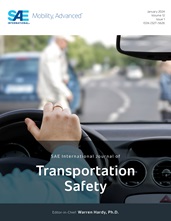Driving speed affects road safety, impacting crash severity and the likelihood of
involvement in accidents on highway bridges. However, their impacts remain
unclear due to inconsistent topography and consideration of crash types. This
study aimed to identify the status of accidents and factors associated with
accidents occurring on bridges along the Mugling to Narayanghat highway segment
in Nepal. The study area involves the selected highway segment stretching from
Aptari junction (CH: 2+42) to Mugling junction (CH: 35+677). Spanning 33.25 km,
the road traverses through both hilly and Terai regions. The study employs
descriptive and correlation statistics to analyze crash data from 2018 to 2023,
aiming to achieve its research objectives. The study reveals overspeeding as the
primary cause of crashes, notably head-on and rear-end collisions. Two-wheelers
frequently exceed the speed limit of 40 km/h limit (29–88 km/h), and
four-wheelers do similarly (18–81 km/h), leading to overspeeding crashes. Trucks
are most involved in incidents, followed by microbuses and cars. Head-on
collisions dominate at bridges, followed by rear-end, sideswipe, and runoff
collisions. Multivehicle incidents outnumber single-vehicle ones. Damaged
railings, barriers, and guardrails significantly contribute to severe accidents,
necessitating urgent repairs and new installations for improved bridge safety.
Poor road conditions and roadside hazards also worsened dangers, highlighting
the importance of road infrastructure maintenance and speed limit
enforcement.
